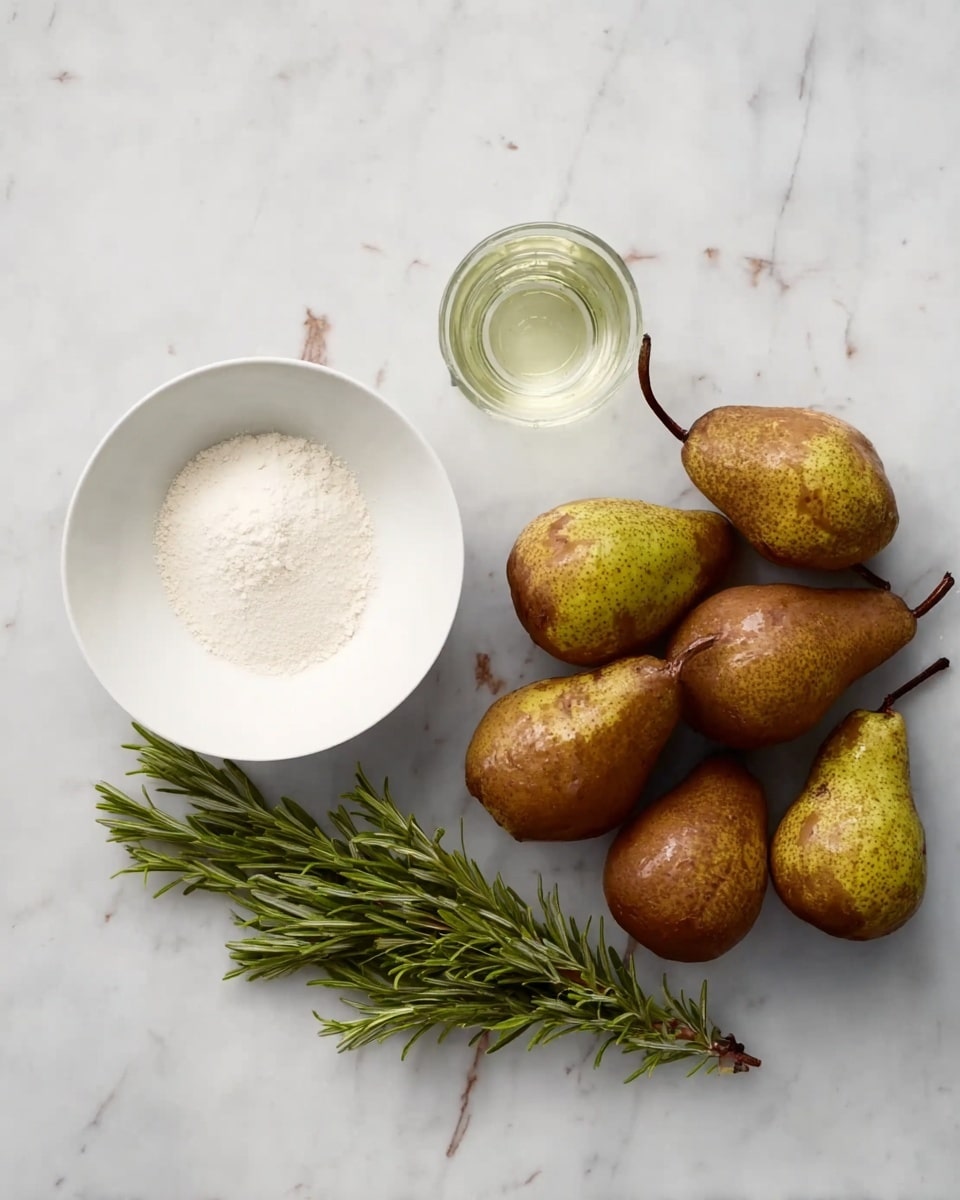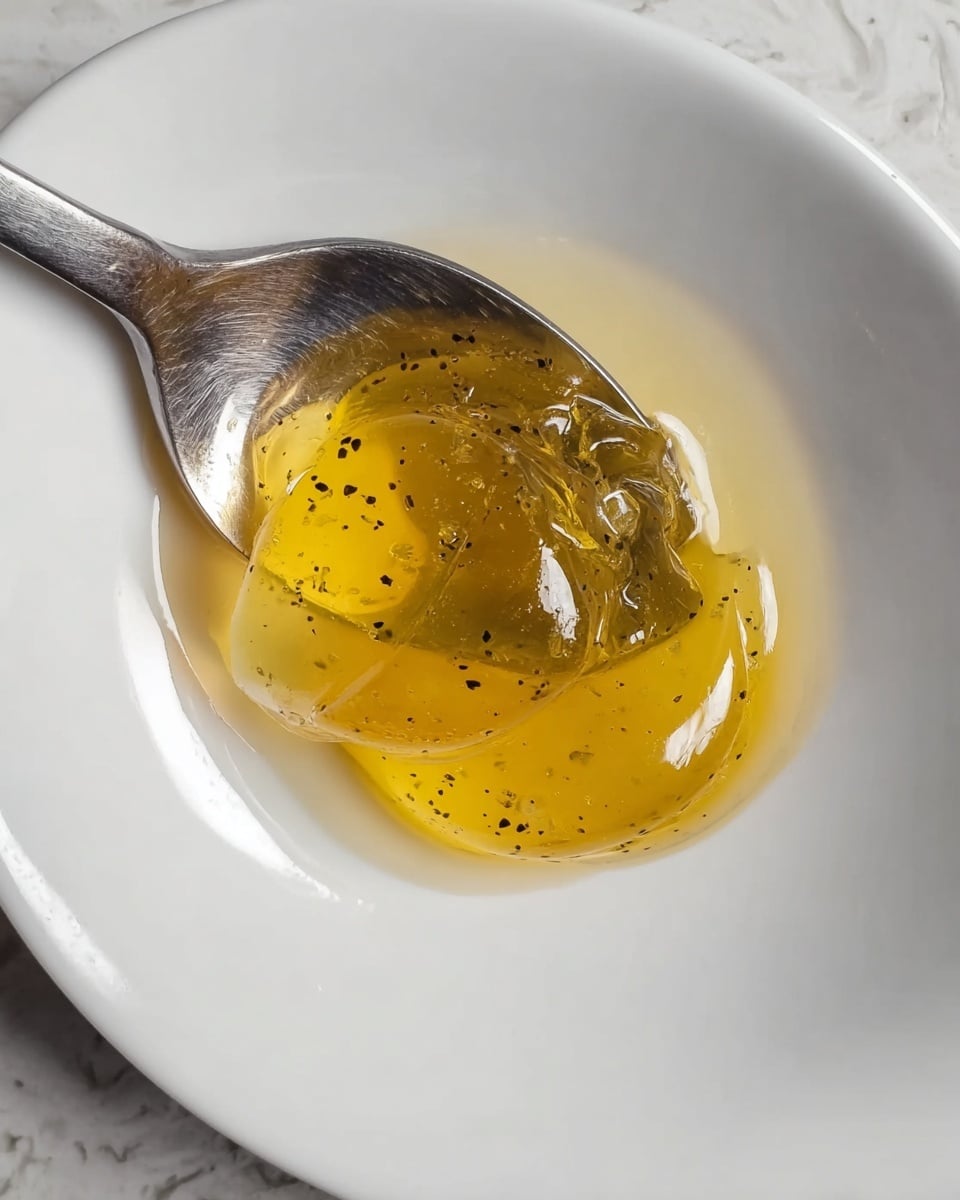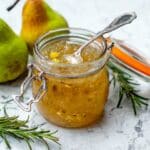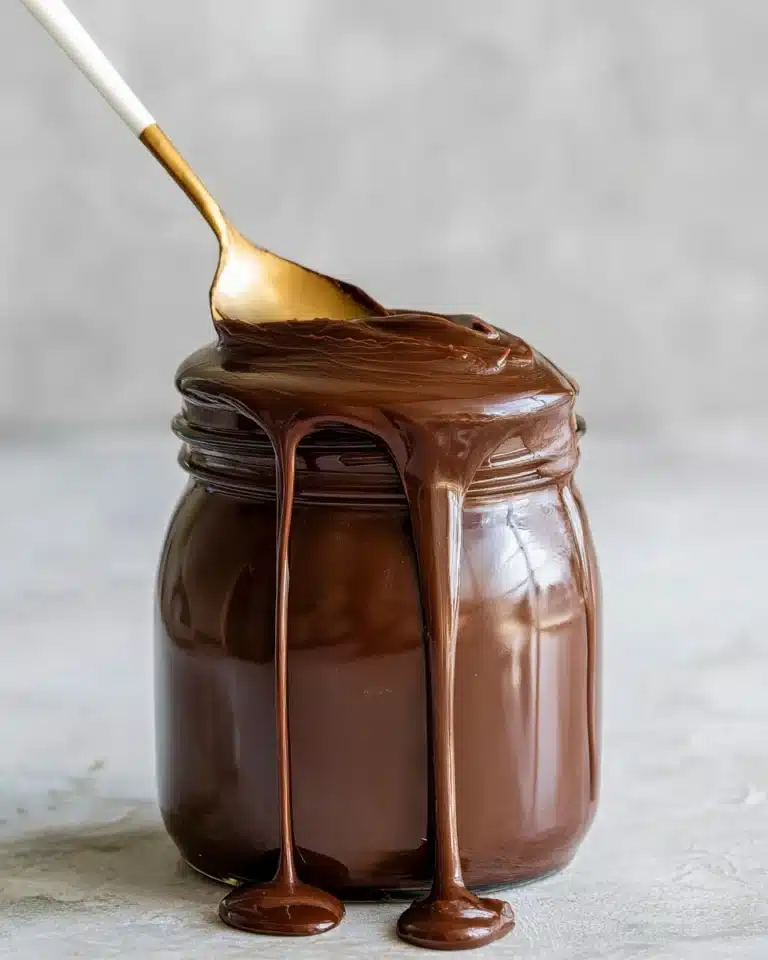If you love the sweet, gentle flavor of pears combined with an unexpected herbaceous twist, this Rosemary and Pear Jam Recipe is an absolute must-try. It’s a beautiful balance of fruity sweetness and fragrant rosemary that transforms ordinary jam into something truly special. Whether you’re spreading it on warm toast or using it as a glaze, this jam brings cozy, artisanal charm to your kitchen in the most effortless way.
Ingredients You’ll Need

Creating this Rosemary and Pear Jam Recipe is wonderfully straightforward because each ingredient plays an essential role. The pears bring natural sweetness and body, the sugar intensifies flavor and helps with preservation, the lemon juice brightens the taste while aiding set, and rosemary adds that enchanting herbal note that sets this jam apart.
- 3 pounds ripe pears (such as Bartlett, Bosc, or Comice): Choose fully ripe pears for rich sweetness and smooth texture in your jam.
- 3 ¾ cups granulated sugar: Essential for sweetness and helping the jam reach the perfect set.
- 2 tablespoons lemon juice: Adds a refreshing zing and helps the jam gel beautifully by releasing natural pectin.
- 2 large rosemary sprigs: Use fresh rosemary to infuse your jam with aromatic, woodsy notes that beautifully complement the pears.
You’ll find the full ingredient list, instructions, and print option in the recipe card below.
How to Make Rosemary and Pear Jam Recipe
Step 1: Prep Your Pears and Saucer
Start off by placing two small saucers in the freezer. These chilled plates will be your jam-setting testers later, ensuring your jam reaches the perfect consistency. Meanwhile, peel your ripe pears, carefully remove the cores, and chop them into small, bite-sized pieces that will cook down evenly.
Step 2: Macerate Your Pears
Put your pear chunks into a large mixing bowl and toss with the sugar and lemon juice. Stir until everything is well combined, then cover and refrigerate this mixture for 12 hours. This maceration process helps the pears release their natural juices, which deepens flavor and softens the fruit to cook down beautifully.
Step 3: Prep the Rosemary
Once your pears have had time to macerate, finely chop enough rosemary leaves to measure 2 tablespoons. The finely chopped rosemary will impart a wonderful aromatic flavor throughout your jam, enhancing the sweetness of the pears with its piney, fresh notes.
Step 4: Cook the Jam
Transfer the entire pear mixture, juice included, into a large, heavy-bottomed pan. Stir in your chopped rosemary. Heat the pan uncovered over medium heat, stirring occasionally until all the sugar dissolves completely — you’ll know it’s ready when the mixture looks smooth and liquidy.
Step 5: Bring to a Boil and Set
Turn the heat up to high and bring the mixture to a vigorous boil. Let the jam bubble away for about 15 minutes while stirring occasionally and skimming off any foam that forms on the surface. Use a digital thermometer to check when it reaches 221°F, the precise setting point. Stir often to avoid hot or cold spots.
Step 6: Test Jam Setting
Remove a saucer from the freezer and spoon a dollop of jam onto it. Wait 30 seconds, then push gently with your finger or a spoon. If the jam wrinkles on the surface, congratulations! It’s perfect. If not, cook for another 5 minutes and test again.
Step 7: Jar Your Jam
Once your jam is perfectly set, pour it carefully into warm, sterilized airtight jars. Seal them up tight, label your creation, and let them cool. Your fresh homemade rosemary and pear jam is now ready to brighten your pantry.
How to Serve Rosemary and Pear Jam Recipe

Garnishes
A little fresh rosemary sprig on the side of your jar or plate instantly complements the flavors and adds a touch of rustic charm that invites your guests to savor every spoonful.
Side Dishes
This jam makes an incredibly versatile companion to cheese boards, especially with mild cheeses like brie or goat cheese. It also pairs beautifully with buttery croissants or as a sweet contrast to grilled meats like pork or chicken.
Creative Ways to Present
Consider swirling the Rosemary and Pear Jam Recipe into Greek yogurt for a luxurious breakfast treat or dolloping it over vanilla ice cream for a gourmet dessert. It’s also fantastic inside homemade thumbprint cookies to impress your friends with unique flavor combinations.
Make Ahead and Storage
Storing Leftovers
If you find yourself with extra jam, store it in airtight jars in the refrigerator for up to three weeks. Always use a clean spoon to keep your batch fresh and prevent contamination.
Freezing
For longer storage, you can freeze your jam in freezer-safe containers for up to six months. Thaw overnight in the fridge before enjoying—though fresh is always best!
Reheating
If your jam thickens too much in the fridge, gently warm it in a saucepan over low heat while stirring occasionally. This will restore a spreadable texture without compromising the delicate flavors.
FAQs
Can I use other herbs besides rosemary in this recipe?
Absolutely! Thyme or lavender can provide lovely floral notes, but rosemary is perfect for balancing sweetness with an earthy aroma that pairs best with the pears.
Do I have to peel the pears?
Peeling helps create a smoother jam texture, but if you prefer a bit more rustic feel and texture, you can leave the skins on, especially if the pears are organic.
How do I know when the jam has set properly?
Using the chilled saucer test is the best way: spoon a little jam onto the cold plate, wait 30 seconds, then push it. If it wrinkles, your jam is ready to jar!
Can I use frozen pears for this jam?
Fresh pears yield the best texture and flavor, but if frozen pears are all you have, thaw them completely and drain any excess water before starting to maintain the jam’s consistency.
Is this jam recipe suitable for canning?
Yes! After filling sterilized jars, process them in a boiling water bath for 10 minutes to ensure long-term shelf stability at room temperature.
Final Thoughts
This Rosemary and Pear Jam Recipe is one of those hidden gems that elevates simple ingredients into something truly memorable. It’s perfect for gifting or indulging yourself—each jar bursts with the lovely warmth of summer pears and fragrant rosemary. Give it a try and you’ll have a new favorite way to enjoy jamtime throughout the year!
PrintRosemary and Pear Jam Recipe
This Rosemary and Pear Jam recipe offers a delightful twist on traditional pear jam by infusing it with the aromatic flavor of fresh rosemary. The process involves macerating ripe pears with sugar and lemon juice to draw out their natural juices, then simmering with chopped rosemary until the jam reaches the perfect set. It’s an elegant, fragrant preserve ideal for spreading on toast, pairing with cheese, or adding depth to desserts.
- Prep Time: 12 hours 10 minutes
- Cook Time: 15 minutes
- Total Time: 12 hours 25 minutes
- Yield: 4 servings (approx. 3-4 half-pint jars)
- Category: Preserves
- Method: Stovetop
- Cuisine: American
Ingredients
Fruits
- 3 pounds ripe pears (such as Bartlett, Bosc, or Comice)
Other Ingredients
- 3 ¾ cups granulated sugar
- 2 tablespoons lemon juice
- 2 large rosemary sprigs (to yield 2 tablespoons chopped rosemary leaves)
Instructions
- Prepare chillers: Place 2 small saucers into the freezer. These will be used later to test if the jam has set properly.
- Prep pears: Peel the pears carefully, remove the cores, and cut the fruit into small, evenly sized pieces to ensure even maceration and cooking.
- Macerate pears: In a mixing bowl, combine pear chunks with the granulated sugar and lemon juice. Stir thoroughly until well combined. Cover the bowl and refrigerate for 12 hours to allow the pears to release their natural juices and soften.
- Chop rosemary: Finely chop the rosemary leaves from the sprigs until you have about 2 tablespoons of herbs to infuse the jam with a fresh, piney aroma.
- Combine ingredients: Transfer the macerated pear mixture along with its juices into a large, heavy-bottomed pan or pot. Add the finely chopped rosemary to the mixture.
- Dissolve sugar: Heat the pan uncovered over medium heat, stirring occasionally, until all of the sugar is completely dissolved into the fruit mixture.
- Boil jam: Increase the heat to high to bring the mixture to a vigorous boil. Continue cooking, stirring occasionally and skimming off any foam or scum from the surface, for about 15 minutes. Use a digital thermometer to check that the jam has reached 221°F, the setting point for jams. Stir constantly to prevent hot or cold spots and to avoid scorching.
- Test jam setting: Remove one saucer from the freezer, spoon a small amount of hot jam onto it, and let it cool for 30 seconds. Then, gently push the jam with your finger or a spoon. If the surface wrinkles, the jam is set. If not, return the jam to the heat and cook for an additional 5 minutes, then test again.
- Jar the jam: Once set, remove the pan from the heat. Carefully pour the hot jam into warm, sterilized, airtight jars. Seal immediately to preserve freshness. Label the jars with the date and contents once cooled.
Notes
- Using ripe, flavorful pears such as Bartlett, Bosc, or Comice ensures the best natural sweetness and texture.
- Macerating the pears overnight helps extract maximum juice and softens the fruit for a better jam consistency.
- Always use a heavy-bottomed pan to prevent the jam from scorching during boiling.
- Check jam temperature with a reliable digital thermometer for precise results.
- Sterilize jars thoroughly before filling to prevent spoilage and extend shelf life.
- This jam pairs wonderfully with cream cheese, toasted bread, or as a flavor enhancer in desserts.








